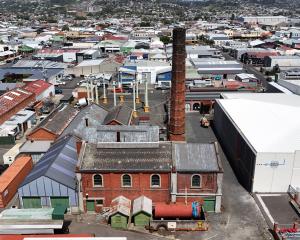An email from Corrections leaked to the New Zealand Herald said the prison was engaged in “emergency planning”.
Corrections confirmed to the Herald it did not have a shortage of beds but “ongoing staffing pressures” meant while it had 944 beds there was only “operational capacity” for 786.
In the email, Corrections said Christchurch Men’s Prison reached “operational capacity” on Saturday which resulted in men being held in police cells over the weekend.
“We are currently engaged in emergency planning which involves the immediate transfer of men from our institution to vacant beds at Otago Correction Facility, this is necessary to make room for new arrivals and ensure men are not accommodated in the police holding cells for longer than absolutely necessary.”
The Corrections staff member said it was a “complex situation” and all transfer decisions were made on an “individual basis”, taking into consideration the specific needs of the prisoner.
“We understand this is very disruptive to our male population and their whānau and are working diligently to ensure that the current situation is resolved with the least distress and disruption to the lives of the men in our care.”
Corrections’ national commissioner Leigh Marsh said in response to a series of questions from the Herald that the department had enough capacity to manage anyone who is remanded into its ’ custody.
“We do not have a shortage of beds. Today we are managing 9061 people across 18 prison sites and our prison network has more than 11,000 beds.
“Operational capacity is a technical term we use to show what number of beds at a site are available based on staff availability at a point in time.”
Operational capacity was based on a number of factors, including the availability of staff to meet the required ratios of staff to prisoners. This was made more complex by the need to manage unlocked groups of prisoners separately from each other such as remand and sentenced prisoners.
“As has been widely reported in media, Corrections is managing ongoing staffing pressures, including at Christchurch Men’s Prison. There are 944 beds at the site, but based on the availability of staff, the current operational capacity is 786,” Marsh said.
“When fewer staff are available, we must make very difficult operational decisions - prisoners may spend less time unlocked, or we may temporarily reduce the number of prisoners that a site can accommodate and divert prisoners to other prisons.”
Marsh said Corrections made an operational decision to transfer six prisoners from Christchurch Men’s Prison (CMP) to Otago Corrections Facility (OCF), which had spare operational capacity, over the weekend.
Another eight prisoners would be transferred on Wednesday and a further eight on Thursday.
“This is not uncommon and is part of our routine prisoner movements. We’ve been carrying out movements of prisoners from CMP to OCF weekly as part of our ongoing prison network reconfiguration which has been happening for about a year now.”
The prisoners on the move are remand and high-security prisoners.
Marsh confirmed one remand prisoner was held in police cells over the weekend.
“If someone needs to be in custody, we work with police to make sure this happens. This can mean transferring prisoners between prisons to free up accommodation, or working with police to temporarily hold people in police cells. Holding people in police cells is not common and we always ensure prisoners are not accommodated in police holding cells for longer than absolutely necessary.”
Marsh said transferring prisoners between sites ensured Corrections kept staff safe and that people in prison were provided with their minimum entitlements and could participate in activities such as rehabilitation programmes.
“However, we acknowledge that transfers can be very disruptive to prisoners and their whānau.”
The number of frontline vacancies at Christchurch Men’s Prison as of September 30 was 44.1 out of 461.1 full-time equivalent roles. These roles included nurses, corrections officers, case managers and instructors.
“Not all of these roles are required to be filled for the safe and secure operation of prisons. Like any organisation, we have a natural turnover of staff and a level of vacancy is built into our operating model. The number of vacancies fluctuates on a daily basis.”
Advertisement













